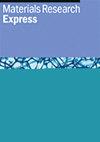基于学习的木质素和炭黑丁腈橡胶复合材料机械性能和可持续填充带预测模型
IF 2.2
4区 材料科学
Q3 MATERIALS SCIENCE, MULTIDISCIPLINARY
引用次数: 0
摘要
橡胶复合材料机械性能(如拉伸强度和硬度)的实验测定涉及复杂的多级制备程序,既费力又昂贵。在本研究中,在丁腈橡胶(NBR)基体中添加了炭黑(CB)混合填料和木质素可持续填料,以增强丁腈橡胶(NBR),总填料含量从每百橡胶 10 份(phr)到 80 份(phr)不等。这项工作旨在开发一种数据驱动的橡胶复合材料机械性能预测模型。利用多层前馈反向传播建立了一个人工神经网络(ANN)模型,用于预测橡胶复合材料的拉伸强度(Ts)和硬度(Hd)。该模型使用包括总填料和木质素负载水平在内的输入参数预测单轴拉伸响应和硬度。利用置信区间进行的统计分析证明了所建议的预测方法的有效性,在 95% 的置信区间内,Ts 的预测误差在 5.47% 和 3.23% 之间,Hd 的预测误差在 3.03% 和 1.85% 之间。所开发的模型可以定义一个可持续的绿色带,方便设计人员在各种丁腈橡胶产品(如软管、密封件等)中用木质素替代 CB,同时不影响拉伸强度和硬度。本文章由计算机程序翻译,如有差异,请以英文原文为准。
Learning based model for predicting mechanical properties and sustainable filler band for NBR composites using lignin and carbon black
Experimental determination of mechanical properties of rubber composites, such as tensile strength and hardness, involves complex multistage preparation procedures that are laborious and expensive. In this study, a hybrid filler of carbon black (CB) along with a sustainable filler of lignin is added for reinforcement in the nitrile butadiene rubber (NBR) matrix, with the total filler content varying from 10 parts per hundred rubber (phr) to 80 phr. This work aims to develop a data-driven predictive model for the mechanical properties of rubber composites. An artificial neural network (ANN) model using multilayer feed-forward back-propagation has been created to forecast the tensile strength (Ts) and hardness (Hd) of rubber composites. The model predicts the uniaxial tensile response and hardness using input parameters that include total filler and lignin loading levels. The effectiveness of the suggested prediction method was demonstrated by statistical analysis using confidence intervals, showing a prediction error between 5.47% and 3.23% for the Ts and between 3.03% and 1.85% for Hd at 95% confidence intervals. A sustainable green band could be defined in the developed model, which is handy for designers to replace CB with lignin in various NBR based products, such as hoses, seals, etc., without compromising on tensile strength and hardness.
求助全文
通过发布文献求助,成功后即可免费获取论文全文。
去求助
来源期刊

Materials Research Express
MATERIALS SCIENCE, MULTIDISCIPLINARY-
CiteScore
4.50
自引率
4.30%
发文量
640
审稿时长
12 weeks
期刊介绍:
A broad, rapid peer-review journal publishing new experimental and theoretical research on the design, fabrication, properties and applications of all classes of materials.
 求助内容:
求助内容: 应助结果提醒方式:
应助结果提醒方式:


